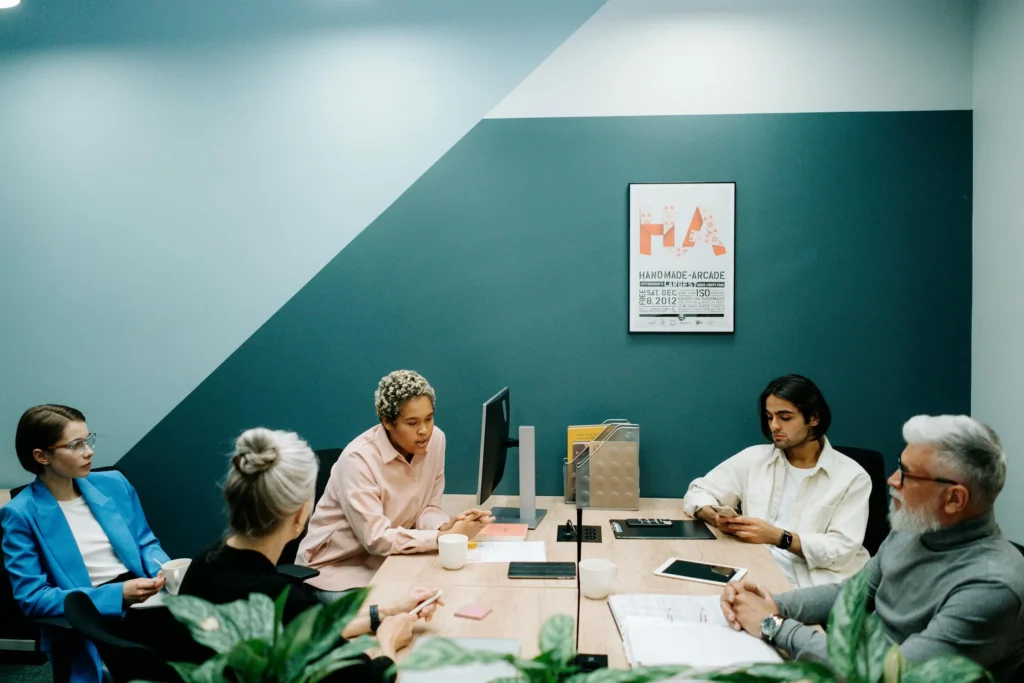Building a culture of learning isn’t just a leadership goal anymore — it’s a business imperative. But with four generations in the workforce, from Baby Boomers to Gen Z, delivering the right learning experience can feel like threading a needle.
A modern LMS can bridge generational gaps by offering structure where needed and flexibility where it matters most. In this article, Sereda.ai explores how different generations approach learning, why personalization is critical, and how a well-chosen LMS can help you design a learning strategy that’s both scalable and deeply human.
Understanding the Generational Mix
Before diving into strategy, let’s quickly map out who’s actually sitting in today’s training sessions. Most workplaces now include three, sometimes even four generations, each with its own learning language:
- Baby Boomers (1946–1964): Raised on structure and hierarchy, Boomers often value clear learning paths, instructor-led formats, and lessons rooted in real-world experience. They learn best when they see purpose, not just process.
- Gen X (1965–1980): The original self-starters, Gen Xers appreciate autonomy. Balancing busy lives, they gravitate toward flexible, self-paced options with a focus on relevance and efficiency. No fluff, just the “how-to.”
- Millennials (1981–1996): Digitally fluent and growth-driven, Millennials expect learning to be mobile, engaging, and connected to their career goals. Think peer collaboration, fast feedback, and progress they can track.
- Gen Z (1997–2012): This generation grew up tapping and swiping. They want bite-sized learning, immediate access, and high interactivity — videos, quizzes, and gamified challenges. Anything less risks losing their attention.
Different generations bring different strengths and different expectations. Overlooking these nuances doesn’t just make learning less effective; it makes it easier to ignore.

Why Tailoring Learning to Each Generation Drives Better Results
Once you recognize the learning preferences of each generation, the business case for personalization becomes clear. When training aligns with how people actually learn, it doesn’t just feel better — it performs better.
Here’s what’s at stake:
- Misaligned formats lead to low engagement: A one-size-fits-all course might look efficient on paper, but it often misses the mark in practice. If Gen Z finds it too static or Boomers find it too fast, no one benefits, and completion rates drop.
- Motivation fuels performance: When learning taps into what each generation values — impact, growth, flexibility — it becomes more than a checkbox. It becomes a driver of individual and team performance.
- Poor fit = wasted resources: If your training doesn’t stick, neither do the skills. And that means more rework, slower ramp-up, and missed business targets.
Tailoring learning to generational styles isn’t just about inclusion — it’s about efficiency, impact, and getting real ROI from your L&D strategy. But personalization at scale isn’t easy to pull off manually. That’s where the right LMS becomes a strategic asset.
Read: What is LMS: Types, Features, and Benefits of Learning Management Systems
How LMS Fits in All of This
Personalizing learning across generations sounds ideal, but without the right infrastructure, it quickly becomes unmanageable. That’s where a modern LMS (Learning Management System) steps in — not just as a content hub, but as the engine behind scalable, tailored learning.
Here’s how the right LMS makes personalization possible (and practical):
- Content flexibility, all in one place: An LMS lets you host a mix of formats — from long-form leadership courses to bite-sized microlearning. This means Boomers can dive into structured modules while Gen Z scrolls through short, interactive videos — all within the same ecosystem.
- Custom learning paths: Instead of sending everyone down the same track, you can create role- or goal-specific learning journeys. A mid-career Gen X manager can focus on team leadership, while a Gen Z new hire explores onboarding via mobile-first content.
- Anytime, anywhere access: Today’s workforce doesn’t sit in one place — or learn at one time. A good LMS meets learners where they are, whether that’s behind a desk, commuting with headphones, or taking a quick lunch-break course.
- Data and insights to improve over time: With built-in analytics, an LMS shows what’s working (and what’s not). You can track engagement by team, format, generation, and continuously refine your strategy based on real usage.
- Scalability without losing relevance: Whether you’re onboarding 10 people or training 500 across departments and age groups, the LMS ensures consistency in quality while still feeling personal to the learner.
In short, if tailoring learning is the goal, a well-chosen LMS is the bridge between intention and execution. It gives HR teams and founders the tools to build not just training programs, but learning cultures that evolve with their people.
Read: Top 7 Benefits of LMS for Employee Training & Development
Creating a Strategy That Leaves Room for Tailoring
Technology, like an LMS gives you the tools, but strategy determines how effectively you use them. For corporate learning to truly resonate across generations, it needs more than content variety. It needs intentional design that balances structure with flexibility.
Here’s how to create a strategy that works across age groups without losing focus:
Step 1. Start with core learning goals, not content
Don’t just ask, “What courses should we offer?” Instead, ask, “What do we need our people to know, do, and grow into?” From there, reverse-engineer the learning paths and shape formats around your audience.
Step 2. Design for flexibility from the beginning.
Create layered experiences. Offer a foundational module for all, then let learners go deeper through self-paced tracks, peer discussions, or live coaching sessions — depending on their style and appetite.
Step 3. Segment by role and career stage, not just generation
Age is one lens — but so are job function, tenure, and development goals. A Gen Z developer and a Gen Z marketer may want very different learning experiences. Personalization should serve both identity and business context.
Step 4. Pilot, measure, and iterate
Use LMS analytics to test what works. Which formats get higher completion rates? Which paths correlate with better performance or faster onboarding? Your learners will show you where to double down — and where to pivot.
Step 5. Empower managers as learning multipliers
Direct managers can help reinforce learning when they understand the tools. Equip them to recommend courses, track progress, and connect learning to daily work — especially useful when generational gaps exist within teams.
A strong learning strategy isn’t rigid — it flexes as your people, tools, and business evolve. The goal isn’t to create the perfect program for every employee — it’s to create a system that lets each of them find what’s relevant and worth their time.

Choosing the Right LMS Platform
A flexible strategy is only as strong as the platform behind it. When you’re managing learning across generations, roles, and locations, your LMS isn’t just a delivery tool — it’s the foundation that enables scale without sacrificing personalization. Here are five capabilities that make a real difference:
- Modular Course Design: Look for an LMS that lets you break learning into manageable pieces, like modules with text, video, quizzes, and tasks. This allows employees to learn in formats that match their preferences and attention spans, whether they’re visual learners or deep readers.
- Adaptive Learning Paths: Not everyone starts from the same place. The ability to create structured learning paths — or let learners move freely through content — gives your team control without losing alignment with business goals.
- Smart Assignment & Automation Rules: Learning should reach the right people at the right time. Platforms that support automated course assignments based on role, department, or other rules help scale learning without constant admin involvement.
- Insightful Reporting: A modern LMS should tell you more than who clicked “next.” Detailed progress and performance reports — per course, track, or individual — help HR and leadership teams measure learning ROI and adjust strategy in real time.
- Integrated AI Support: Employees shouldn’t have to dig through content to find answers. Built-in AI tools that surface the right lessons or summaries on demand make learning more accessible and more aligned with real-time workplace needs.
At Sereda Learning, we built our LMS platform with these exact principles in mind — flexibility, relevance, and ease of use — to help organizations like yours build learning cultures that grow with your people.
Conclusion
A multigenerational workforce isn’t a hurdle — it’s a strength. But only if you’re willing to meet people where they are. The way we learn has evolved, and so have the expectations of employees at every career stage. With the right strategy and the right platform, you can create an environment where every employee, from the most seasoned leader to the newest hire, feels supported, challenged, and valued.
At Sereda.ai, we believe learning should flex to fit people, not the other way around. That’s why we’ve built our tools to help you design training that adapts, scales, and grows with your team. Curious how it works in practice? Book a demo and let’s explore what learning could look like in your organization.